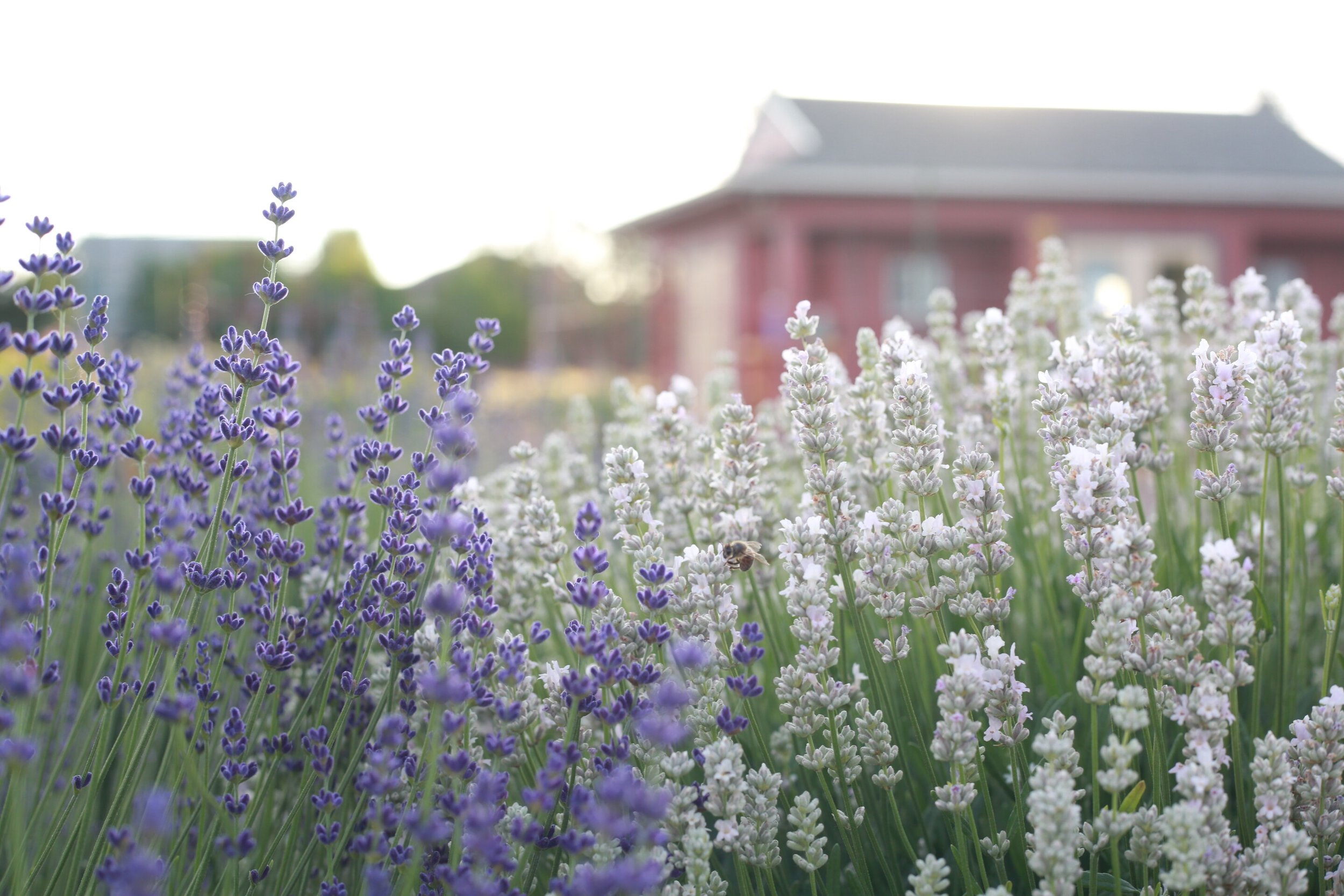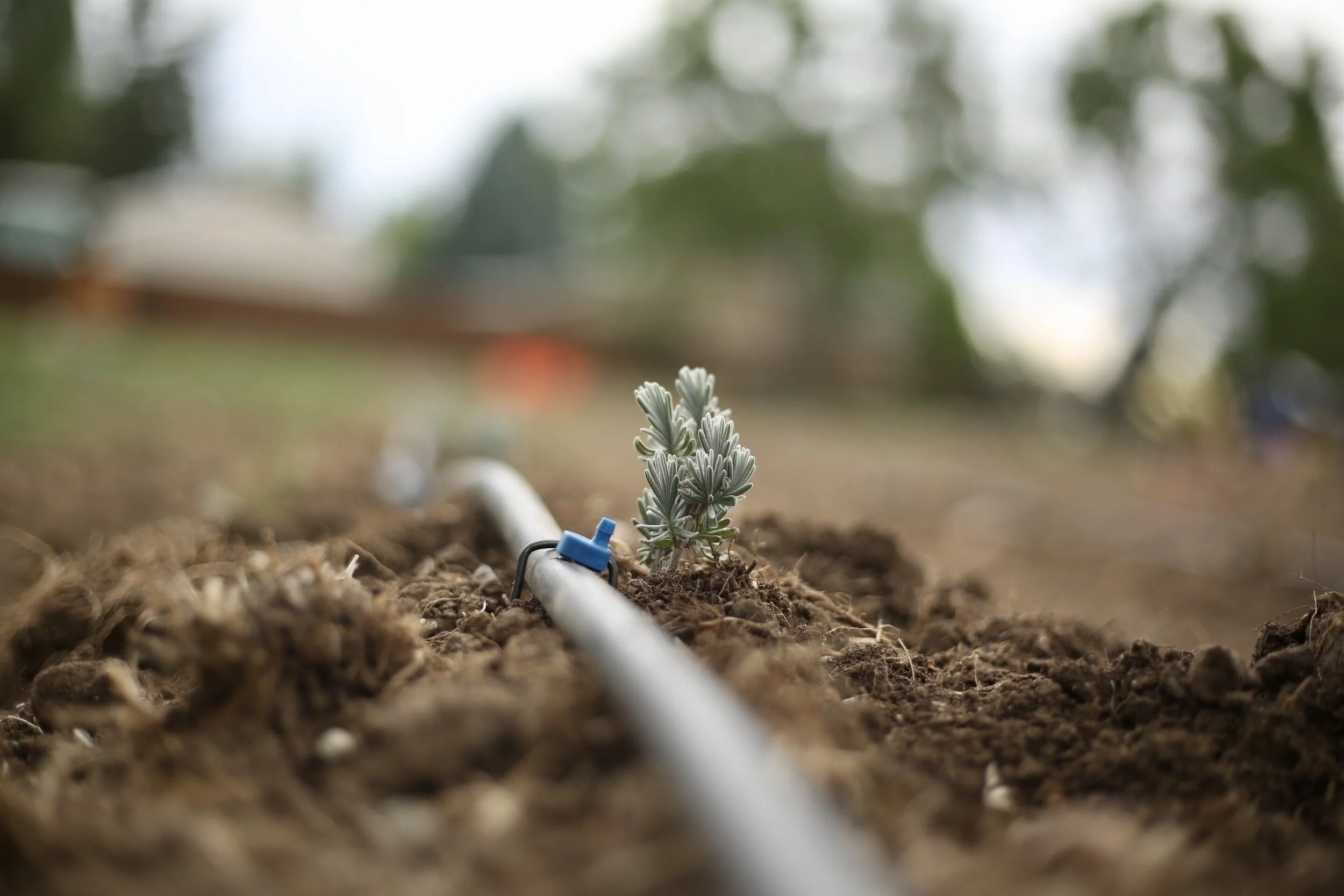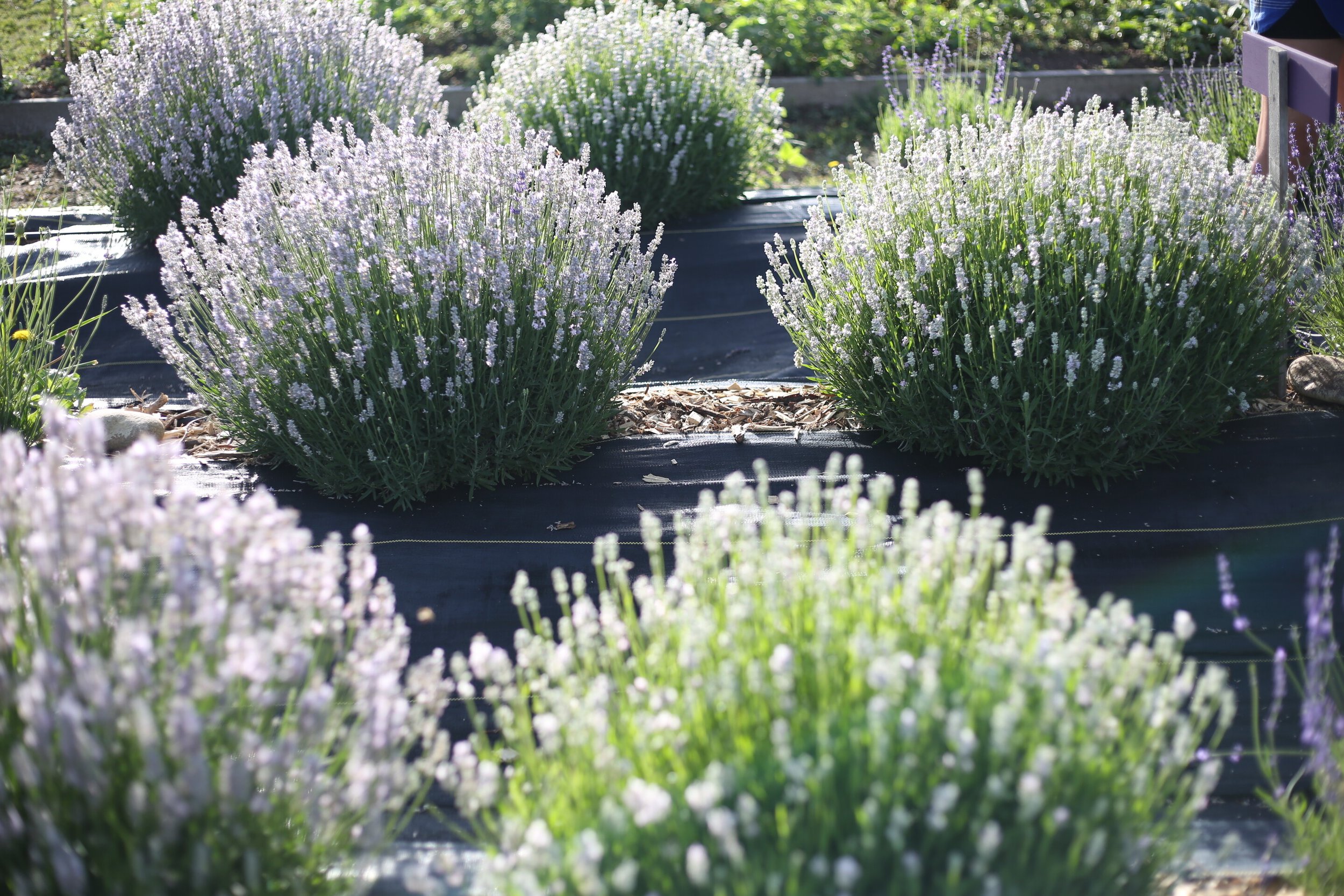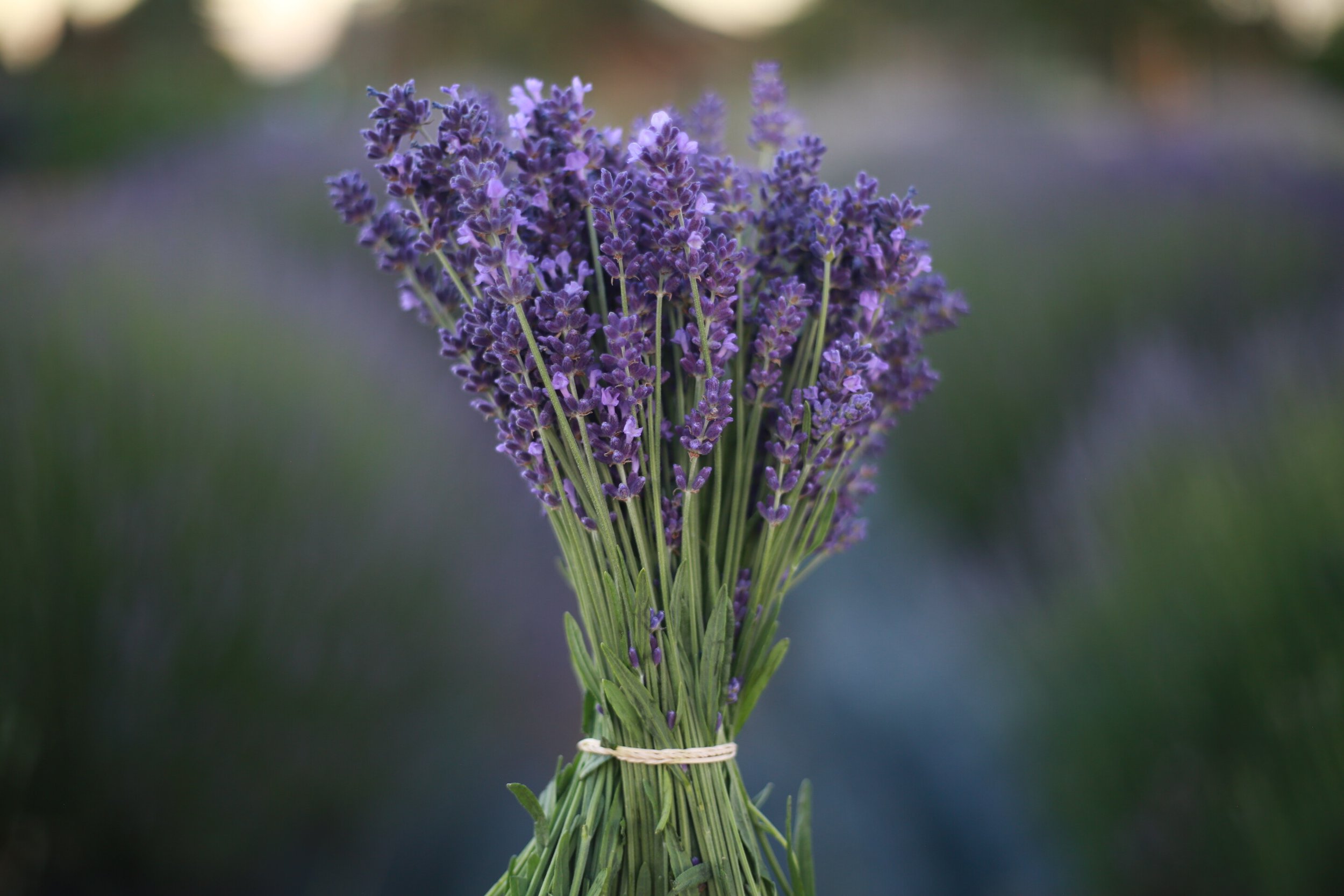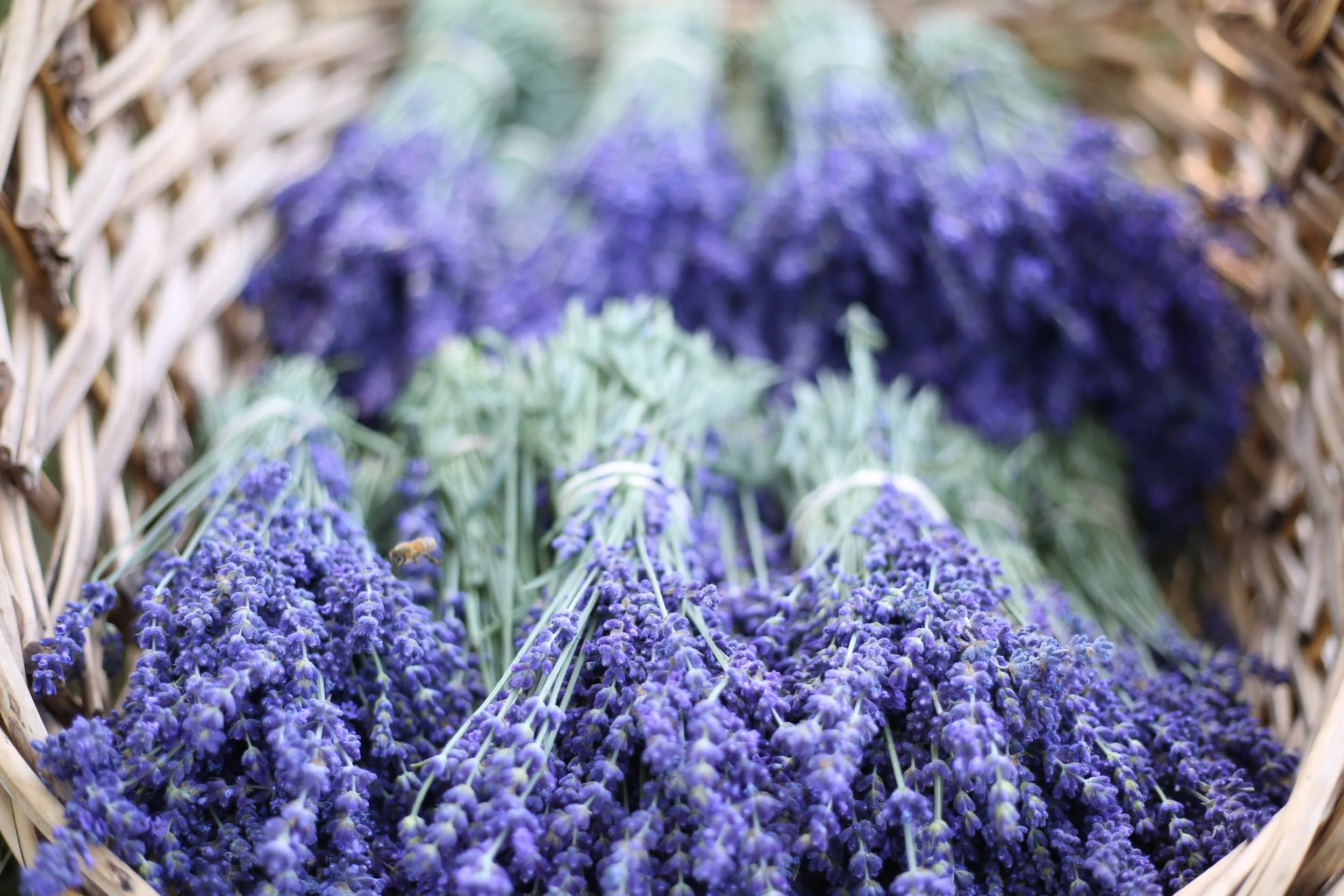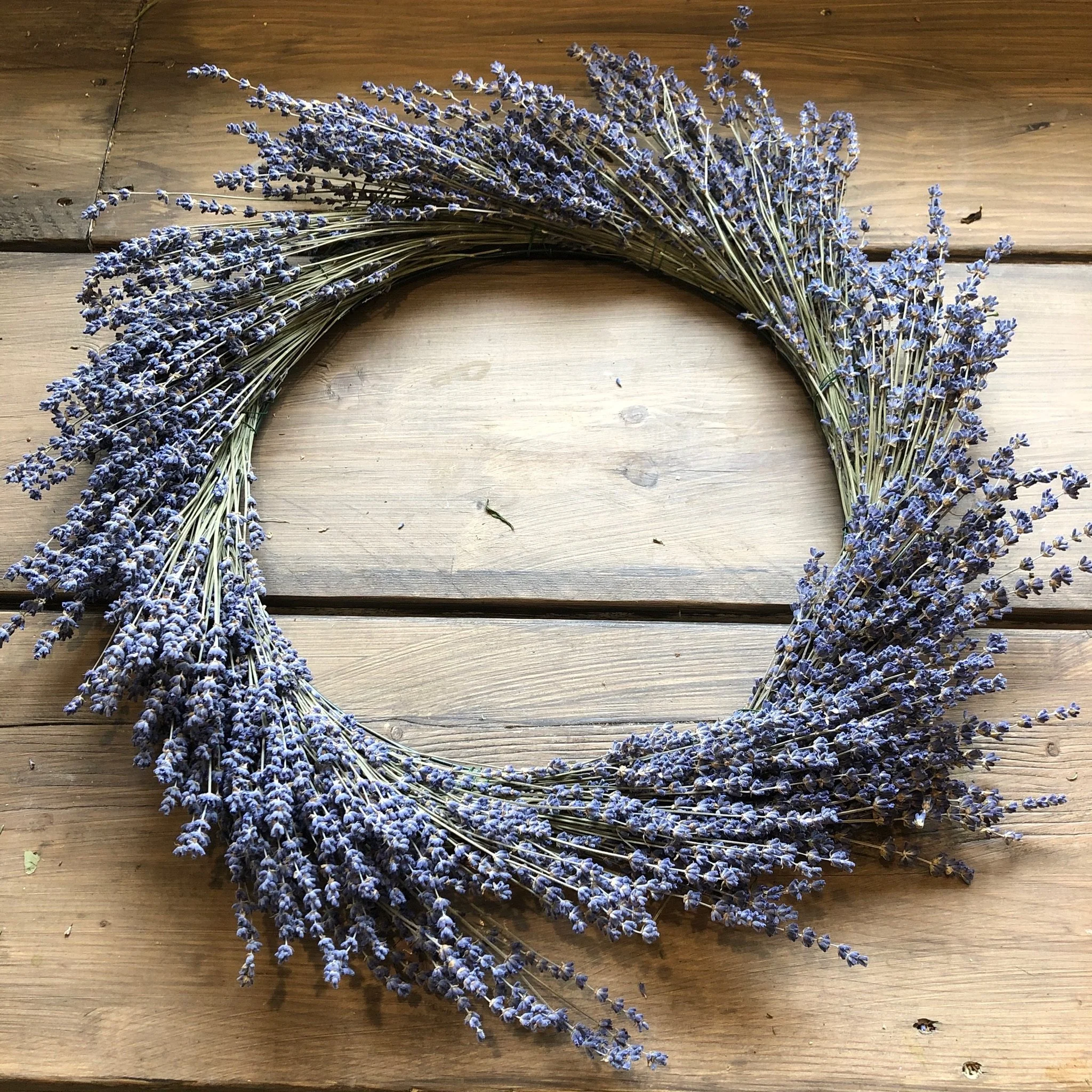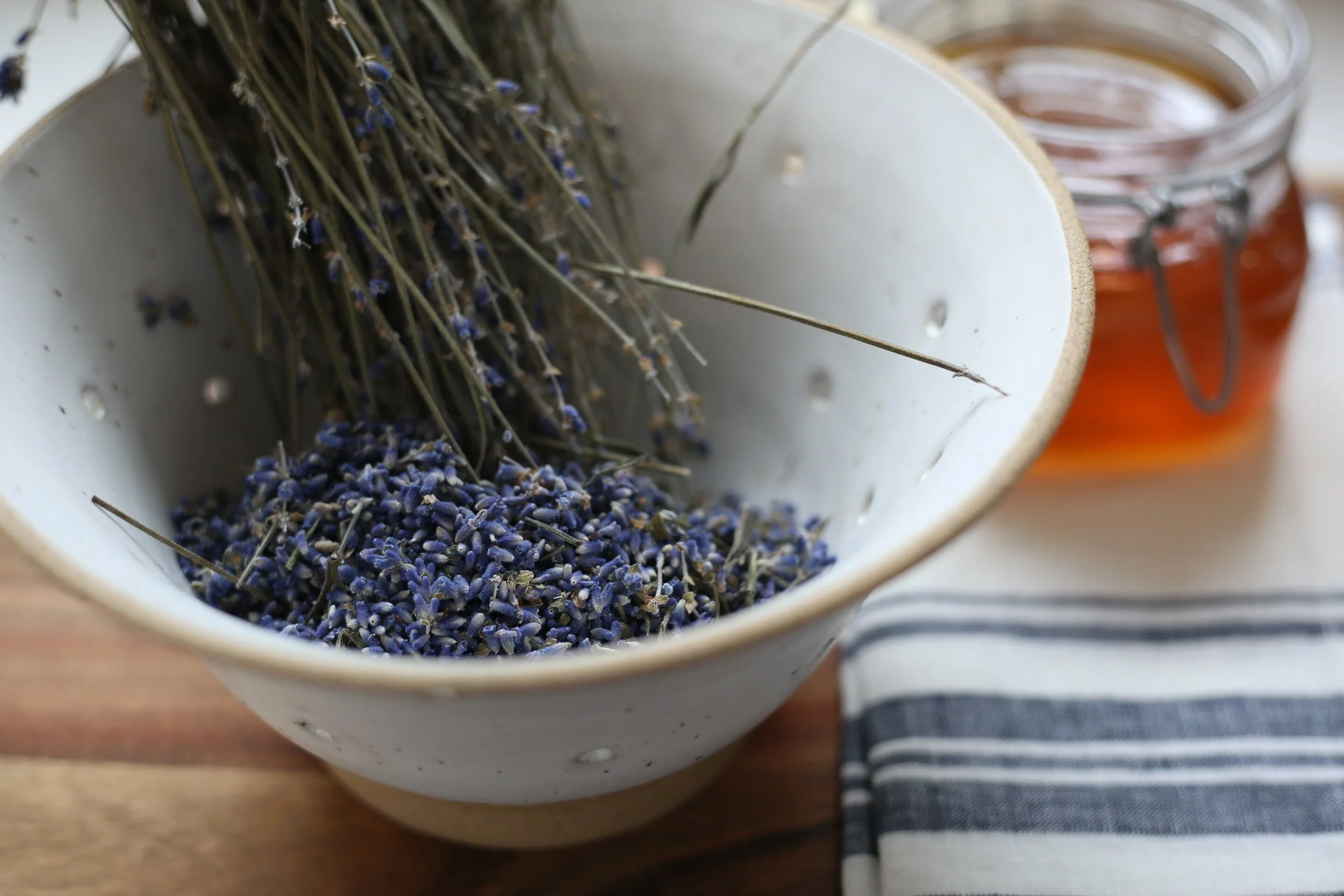Your Guide to Growing Lavender the Flower Farmer Way
Lavender is one of the most versatile plants to grow.
Growing lavender is a rewarding process. Lavender can be one of the easiest plants to grow and one of the most versatile herbs to use.
But lavender can be a mystery for some gardeners and designers alike. How do you grow it well? When and where can you buy it as a floral designer? How do you use it?
Follow along and you'll discover how to crack the code—and you’ll fall in love with lavender for the many reasons cultures have been intoxicated by it for centuries.
In this guide, you’ll get essential tips and tricks to growing this beloved, fragrant plant, including:
Benefits of Growing Lavender
There are so many benefits to growing lavender. This herb can be:
Enjoyed in the garden as a focal plant
Cut for fresh bundles
Dried for wreaths
Distilled into oil
Used in apothecary products
And this vibrantly scented herb produces long fragrant, colorful stems for well over ten years with very little labor and water.
Love growing flowers? Discover how to grow a cutting garden (our free guide for beginners!).
Growing Lavender: A Quick Run-Down of the Maturing Process
In late spring, lavender sends up 12–36" stems in shades from green to silver, and flowers in shades of lavender and periwinkle blue to deep royal purple—and even white and blush. The plant itself provides lots of visual interest to the garden, and the buds are swollen with essential oil, calling pollinators to the garden from miles away by midsummer.
Once the flowers begin to open, they are ready to be harvested and can be used immediately in the kitchen or taken to the design studio to utilize in fresh arrangements or dry for later uses.
After the harvest, lavender is trimmed into a tidy landscape shrub where it sits quietly until next summer.
Sourcing Lavender Plants
One of the most important things to remember when growing lavender is to always buy plants instead of seeds in order to grow lavender that is true to the mother variety.
Lavender plants can be purchased from local garden centers for home gardeners, but commercial growers typically purchase plugs or small pots from wholesale nurseries that offer a larger cultivars selection.
Large wholesalers like Ball sell lavender in a handful of unique cultivars, but to find the largest selection, seek out nurseries that specialize in lavender like Sage Creations in Palisade, CO.
There are hundreds of different cultivars with unique characteristics, so find one that meets your needs the best!
Lavender is best grown from plugs or pots.
Plugs are the smallest option and can be shipped to you.
Should you purchase lavender Plugs or Pots?
Which type of lavender plant is right for you? Plugs can be purchased from wholesalers for $1.50 per plug or in pots in 2" to 1-gallon sizes from $3–$8.
Plugs are the smallest and will usually ship to you in March with the assumption you will repot them into larger pots right away. You should continue to grow them in a greenhouse (if needed) until you can plant them outside after the last frost.
If you don't have a greenhouse, I recommend buying 2" pots to be picked up in the spring. For large lavender orders, place orders between August and October for the following spring so nurseries can begin propagating plants in the fall.
There are many types of lavender to choose from.
Types of Lavender to Grow
Lavender is a perennial shrub part of the mint family, including sage and oregano.
It has over 450 varieties, or cultivars, worldwide, but not all of them grow well in North America.
Lavender comes in a wide range of sizes, habits, and bloom colors. The best lavender variety for you will depend on the growing conditions of your climate and what you want to achieve with the plant.
For simplicity's sake, people have grouped lavenders and given nicknames instead of using complicated botanical names to distinguish different species.
The most common species of lavender are grouped into English, French, Spanish, and even German.
English lavender's botanical name is Lavendula x angustifolia and is a group of lavenders that are more cold hardy than French varieties, botanically known as Lavendula x intermedia.
These are the two most common species grown in North America. If you live in a climate where temperatures drop below freezing for much of the winter, you will have the best luck growing Lavendula x. angustifolia, or English lavender.
My Favorite Lavender Cultivars
Betty's Blue – This variety is a dark purple color and has the ability to hold color when dried. It’s my favorite for wreath making.
Purple Bouquet – This variety has long stems that make quintessential English lavender bundles.
Folgate – This variety does wonderfully all around, especially as a landscape plant.
Edelweiss & Impress Purple – These cultivars have 36" long stems that will make a statement in the gardener’s landscape or when used as a cut flower.
Did you know we have online flower growing classes? It’s true! Learn how to grow, plan for, and harvest cut flowers for wedding, events, floral design, and more!
Lavender plants need well-draining soil, time to dry out, and deep waterings.
How to Plant and Grow Lavender
Ready to get growing? Here’s what you need to do to successfully grow lavender.
Soil
The most important thing to remember when growing lavender is that it thrives in well-draining soil and needs deep watering between periods of drying out.
And it loves full sun! Lavender is native to Mediterranean climates with rocky soil and dry arid conditions. So if your soil is claylike, consider growing lavender on hills or raised beds to improve drainage. It also needs soil with high calcium content.
In the Mediterranean, the soil is built on top of layers of limestone bedrock, so there is plenty of calcium available naturally in the soil. Calcium can be added to the soil by mixing garden gypsum into the soil, which can be found at garden stores.
Water
Lavender tolerates dry conditions making it a good plant in arid climates.
However, it does need water and prefers a drip irrigation system where it receives regular water at the soil level.
On our farm, we drip irrigate our lavender field with 1-gallon emitters for an 8-hour soaking every two weeks allowing it to dry out between watering.
Pests
Grasshoppers are one of the only pests that bother lavender. To keep grasshoppers at bay, use a biological control such as Nolo Bait in the spring. It can be purchased online at Arbico Organics.
Pro-tip: Lavender is a companion plant to roses as lavender attracts ladybugs that eat the aphids that often create havoc for roses. They also look beautiful grown together in the garden.
Spacing
Make sure you give lavender enough space to grow. English lavender is a smaller shrub and should be planted at 30" spacing, and French lavender is planted at 36" spacing.
When planting for field production, grow lavender in rows that are 5' apart, center to center.
have a client asking for lavender? you should be able to find it fresh between July through mid-September.
Sourcing Lavender for Cut Flower Work
If you’re a floral designer, you might want to incorporate lavender into your designs. But where do you find the best cut lavender options?
Where to buy fresh lavender
Lavender is generally available fresh from farms or wholesalers around the 4th of July through about six weeks after August (of course this varies based upon your growing zone). After that time, growers begin drying lavender to use later in the season for either dried wreaths, dried buds, or distilled into oil.
How to buy Fresh lavender
Lavender is sold by the growers' bunch, which is approximately 150 stems. Most growers sell it out of water, but many local flower distributors add it to buckets with water for florists.
Buying directly from farms would allow full-crate discounts for fresh or dried lavender. Dried lavender buds can also be purchased from farms to be used in flower baskets or flower sachets for tossing at weddings.
Harvesting & Storing Lavender
It is essential to harvest lavender for the health of the plant. If it is not harvested, the plant becomes woody, and plants will not produce as many flowers.
Lavender is ready to harvest when 2/3 of the flowers are open. This is when most of the oil is in the buds. A sure sign that it is ready to harvest is when there is a lot of bee activity.
When it first starts to bloom, you will see a few bees, but after a week to 10 days of blooming, the bee activity intensifies, signaling high oil content and the perfect time to harvest. If you get stung, use lavender oil to reduce the inflammation.
Tools
A sickle is the best tool for harvesting. Grab a large handful of stems and cut 1-2" above the wood with one quick swipe. Rubber-band the bunch to hold it together. Sickles can be purchased at a garden store or online at AM Leonard.
Storing
Store fresh lavender flat in a crate or upright in water in a cooler. Lavender will hold fresh for 1-2 weeks in a cooler then will need to be hung for drying.
Store fresh lavender laying flat in a basket or crate or a upright in a vase in your cooler.
Drying Lavender
It is important to dry lavender upside down, so the stems are straight for later use. To dry lavender, follow these simple steps:
Hang them in a dark room with ventilation or a small fan, so the lavender doesn't get moldy. (Lavender will dry in 3-5 days depending on humidity levels but will get moldy if there is no ventilation.)
At day 3, do a quick check. You can do a thumb test to ensure it's dry before taking off the rack and storing it. Push your finger into the middle of the bunch. If you feel moisture still in the bunch, wait a few more days.
If it is completely dry through the bunch, take the lavender off the drying rack and store it upright in a box. Do not store them flat on top of each other as stems get crushed and buds fall off. Always store dried flowers upright!
Did you know growing flowers can help combat climate change? Click to learn more!
Lavender Uses
There are many health benefits of using lavender in apothecary products. Since this article focuses on using lavender in the cut-flower industry, I'll share how we use it on our farm and in our design studio:
CSA bouquets
Shower Swags
Fresh bundles at farmers markets in July
Wedding flowers (bouquets, boutonnieres, corsages, crowns, flower baskets, table decor, and more!)
Summer & fall Wreaths
Infused into farm honey
Dried lavender makes for a beautiful spring or summer wreath.
Use dried lavender blooms for gifted aromatic sachets.
Lavender blooms at a time in the season where spring and early summer are done blooming, like tulips and peonies.
And before flowers like dahlias hit their stride. July is known as a slow time in the flower business, but our farm has a product to sell to CSA members and at markets by growing lavender.
We enjoy the calm lavender brings in the middle of the summer! I hope you enjoyed this article, and it gives you new ideas on how to use lavender in the coming year.


